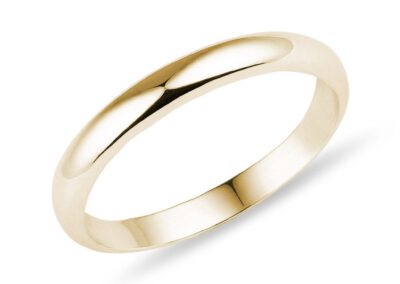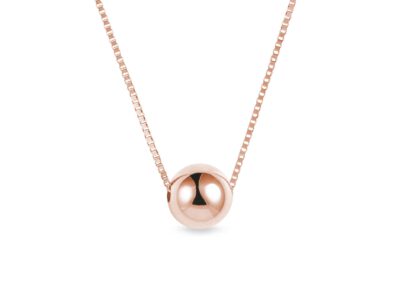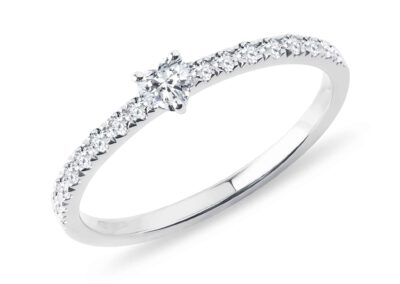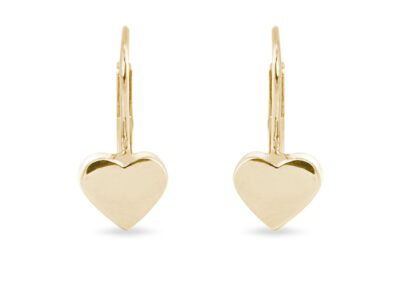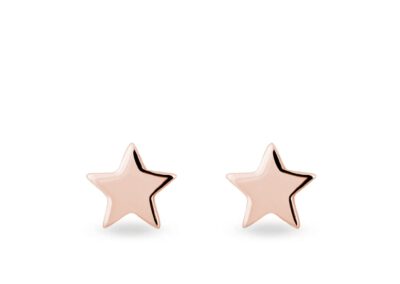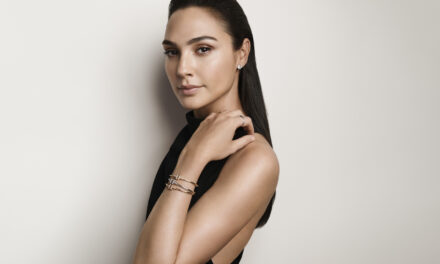Karat also spelt Carat is the measurement of the purity of gold. The word “carat” comes from the Greek word “kerátion”, meaning “full of the carob”. Carob or St. John’s bread was used as a uniform weight to measure if needed in the past. Later in the 16th century, karat became the universal measure of gold purity and fineness.
The measurement of gold purity uses a scale of 24 numbers, where a carat gold is 1/24 part. The number 24 represent the purest gold, which does not include any other metals – it is 24 karat gold. The fineness of the gold is expressed by the number, which equals the number of gold parts it contains. So, for example, if a jewellery piece includes 16 parts of gold and eight parts of alloyed metals, we call it 16-karat gold.
Differences between gold karats
As said before, the higher the karat in the gold item, the purer is the gold inside. On today’s market, gold is available in various carats and are formed into coins, gold bars or precious gold jewellery pieces. Let’s take a look at the varieties of gold and their differences.

24K Gold
24-carat gold is 100 % pure gold that does not include any other metal, meaning it’s the purest form of gold available. Pure gold has a bright yellow colour and a rich yellow tone. Its disadvantage is its density which is low compared to other varieties of gold. The low density makes the gold soft and bendable, meaning it is not crafted into jewellery pieces. A small amount of alloy has to be mixed in to make them durable. This fold of 24K gold is used in electronics and also medicine.
22K Gold
Unline 24K Gold, 22K Gold is the one commonly used to make exceptional jewellery. 22K means that the gold has 22 parts gold and two parts of an alloy or other metals, which thickens the gold and makes it durable. The two parts can be, for example, silver, zinc, nickel or any other alloys. Although 22K gold is used for gold jewellery, it is not suitable for big and heavy jewellery. Diamonds or other gemstones weigh something, and 22K gold can be too weak and soft to hold the gems. That means that they can fall out or even destroy the whole jewellery piece. However, this gold carat is suitable for occasional wear.
18K Gold
18K gold consists of 75% pure gold that has been mixed with 25% other metals, such as copper or silver, or other alloys. The benefit is its price, which is much lower than 22K, or 24K gold. Also, 18K Gold is excellent for studded and diamond jewellery. It is also suitable for everyday wear, and the low amount of metals makes it also great for those with allergies. 18K gold is usually used for making watches, rings and other jewellery. Its rich yellow gold colour makes it just perfect for any wedding ring or other jewellery piece.
14K Gold
About 41% of 14K gold is made out of a mixture of metals, such as copper, zinc, silver or nickel. Meaning it consists of only 14 parts of gold, which is the reason for its lower price. Also, the use of other metals makes it durable and more suitable for daily-wear jewellery. Also, it shouldn’t cause any skin allergies.
Its colour is usually paler than higher carat gold due to its percentage of other metals. It is very often used for cheaper but very durable wedding bands.
10K Gold
This alloy of gold contains a minimum of 41,7% of pure gold, with the rest again being other metal or an alloy. The low percentage of pure gold makes it less precious and prone to staining and tarnish. However, it is very durable and sturdy, so it doesn’t scratch or bend at all. On the other hand, the disadvantage is the possibility of some skin allergies due to the high amount of metals.
It is the palest of all carats of gold with the lightest yellow gold colour. 10K gold is frequently used in necklaces, chains and other simple jewellery that are not part of any luxury jewellery collection.
Which type is the best?
To be fair, no one can say which of these gold types is the best. It all depends on the variety of gold jewellery it’s used in, on how often you’ll wear the jewellery and so many other factors. If you’re selecting the gold type for your wedding bands, you definitely should be aware of other factors. Those are the sensitivity of your skin, metal allergies, lifestyle and overall style and aesthetic taste.
And what about white gold and rose gold?
The feminine and elegant white gold jewellery is widespread nowadays, so how exactly is it made? You have to mix up pure gold with some white metals, for example, Silver or Palladium. However, the original yellow colour of pure gold is hard to change into white, so it needs an extra push. The gold has to be coated in Rhodium to make the white gold jewellery white. This process is called rhodium plating. Rhodium is a white metal that can beat the yellow colour.
A large portion of copper has to be mixed in with the gold to make the fashionable rose gold. That creates a romantic pinkish colour.
All types of gold have their pros and cons. However, every single one of them is stunning and worth buying for your unique gold jewellery piece.


